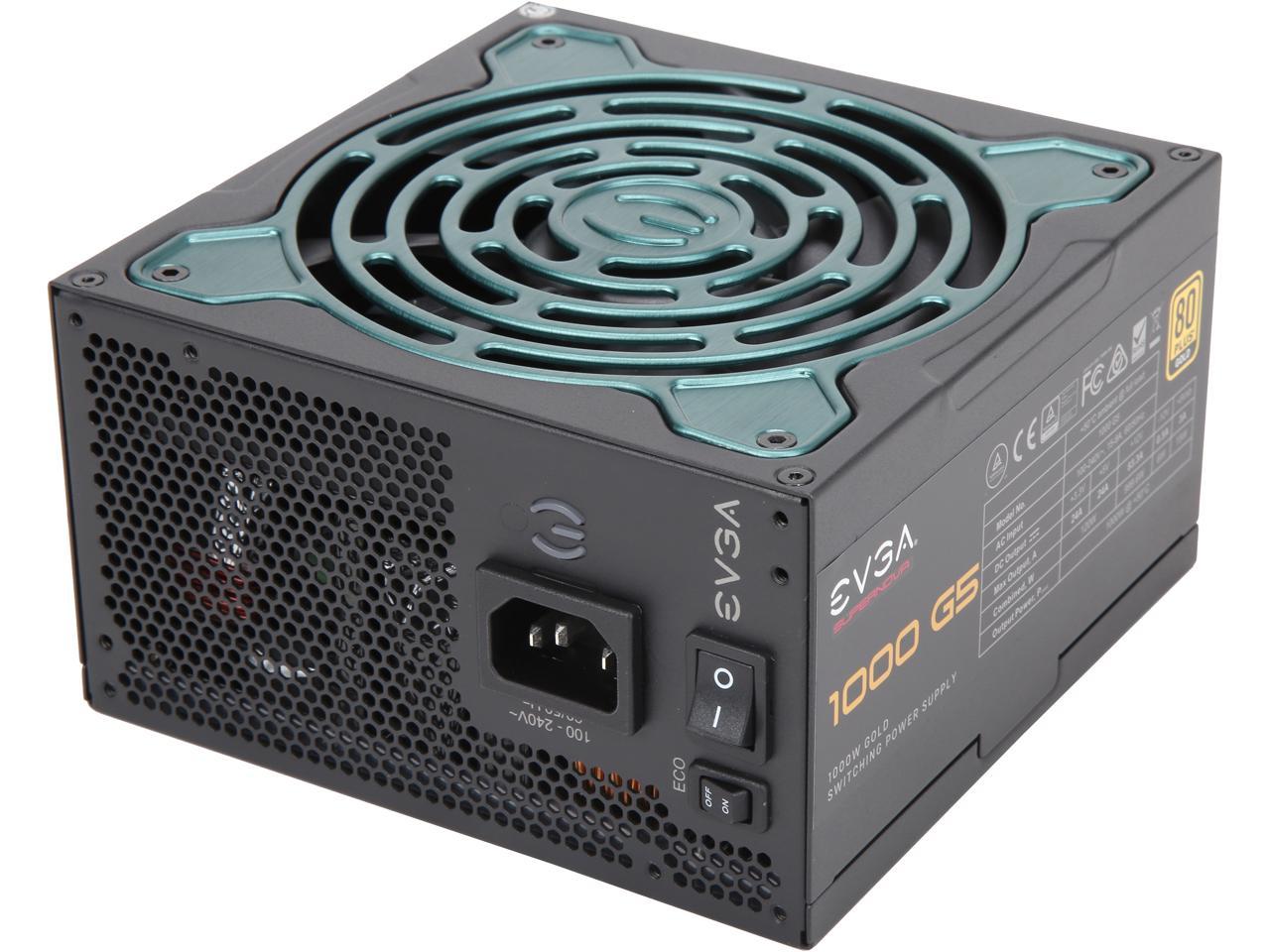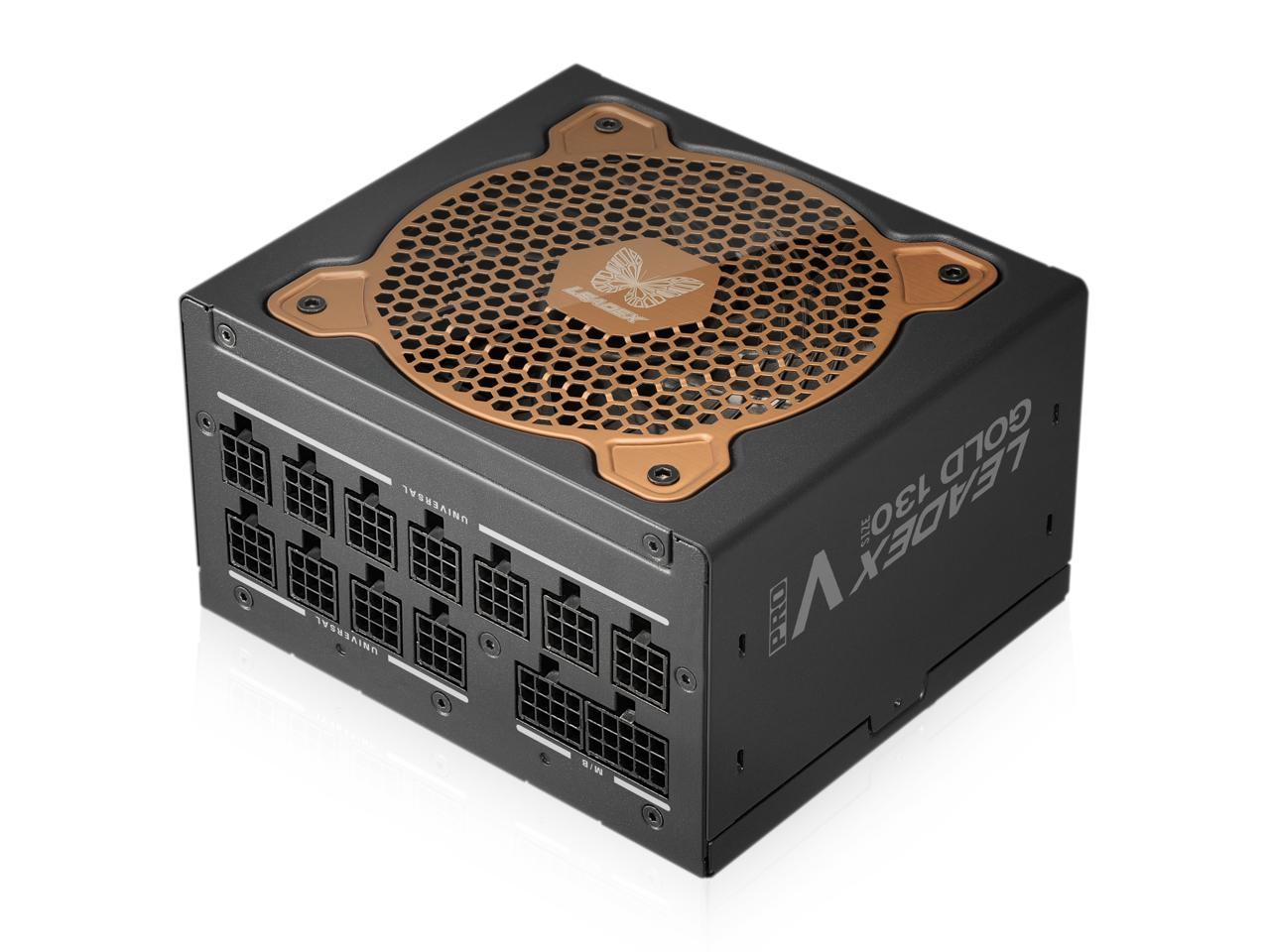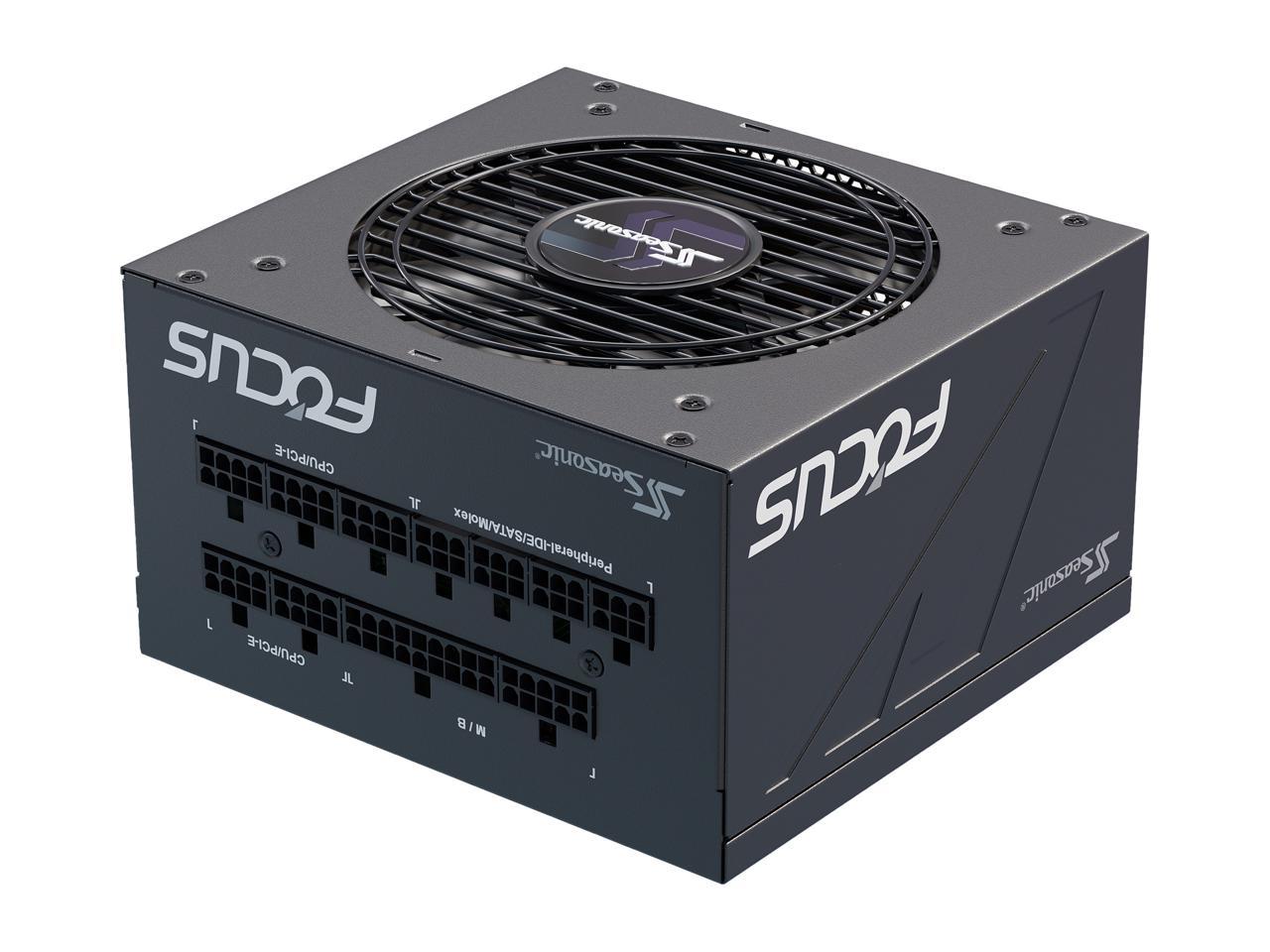Why you can trust Tom's Hardware
To learn more about our PSU tests and methodology, please check out How We Test Power Supply Units.
Primary Rails And 5VSB Load Regulation
The following charts show the main rails' voltage values recorded between a range of 40W up to the PSU's maximum specified load, along with the deviation (in percent). Tight regulation is an important consideration every time we review a power supply because it facilitates constant voltage levels despite varying loads. Tight load regulation also, among other factors, improves the system’s stability, especially under overclocked conditions and, at the same time, it applies less stress to the DC-DC converters that many system components utilize.
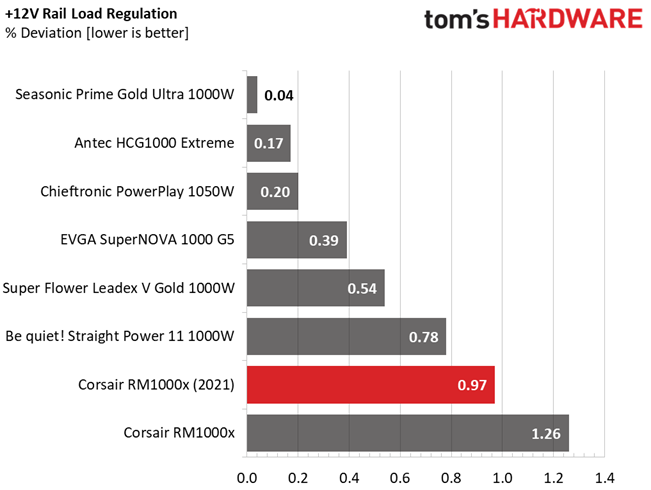
Results 1-8: Load Regulation
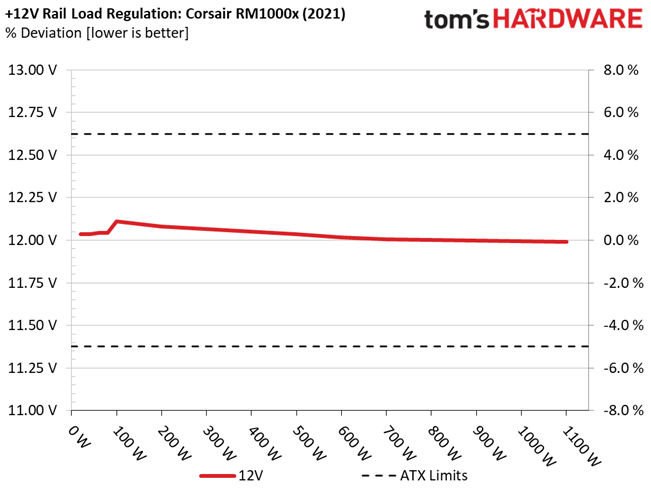

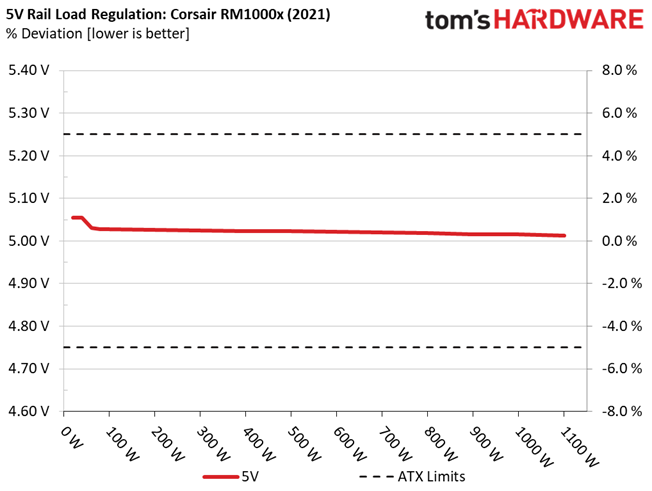



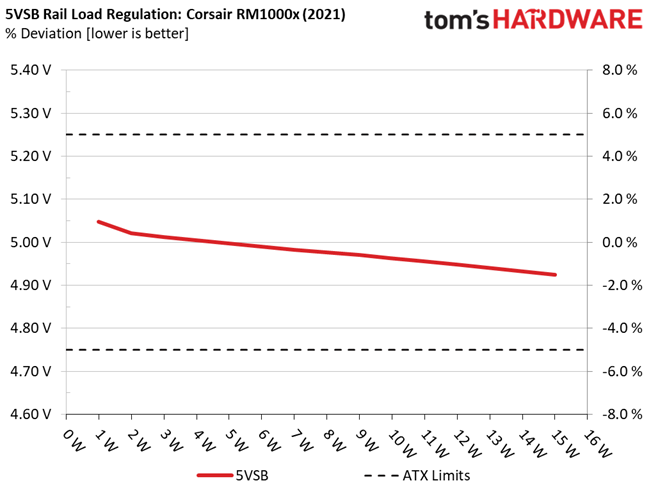
Load regulation at 12V doesn't look as tight as in the competing offerings, because of a deviation at light loads. In fact, voltage drops on this rail are low. The same goes for the rest rails, where voltage drops are low.
Hold-Up Time
Put simply; hold-up time is the amount of time that the system can continue to run without shutting down or rebooting during a power interruption.

Results 9-12: Hold-Up Time

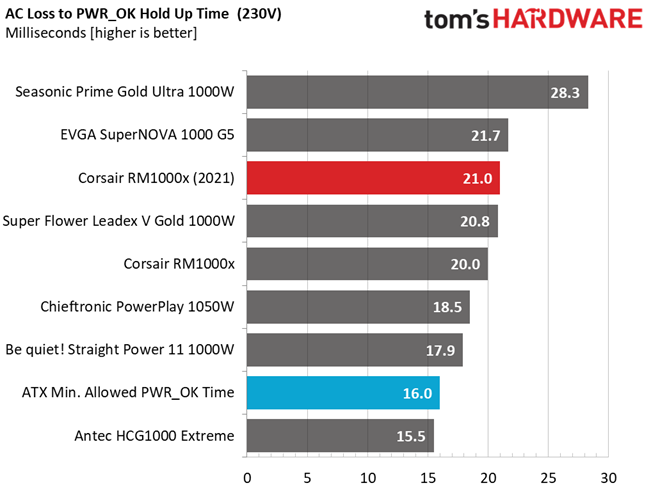

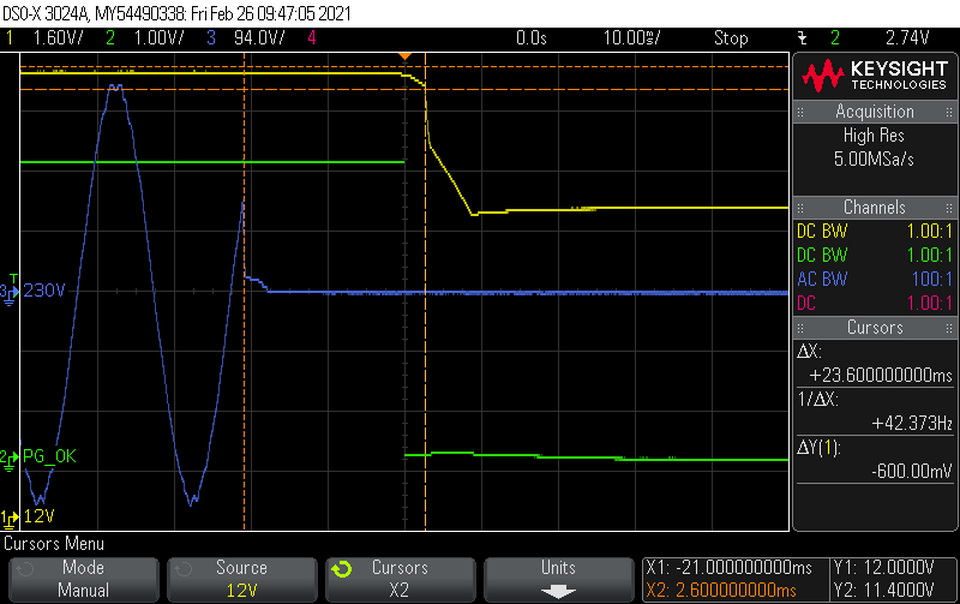

The hold-up time is long and the power ok signal is accurate.
Inrush Current
Inrush current, or switch-on surge, refers to the maximum, instantaneous input current drawn by an electrical device when it is first turned on. A large enough inrush current can cause circuit breakers and fuses to trip. It can also damage switches, relays, and bridge rectifiers. As a result, the lower the inrush current of a PSU right as it is turned on, the better.
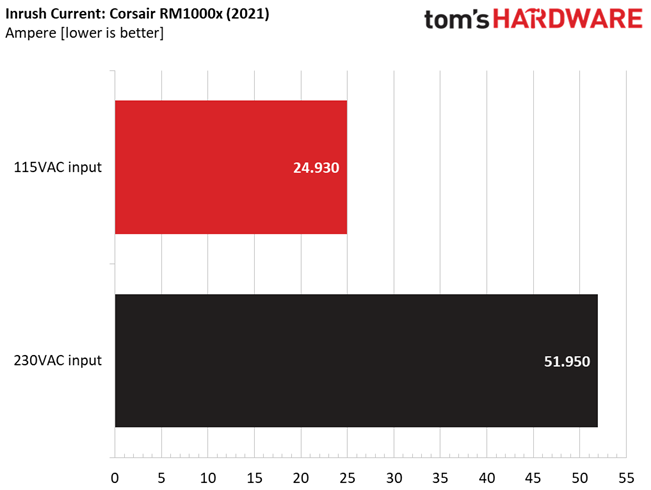
Results 13-14: Inrush Current

Inrush currents are kept low with both voltage inputs.
Get Tom's Hardware's best news and in-depth reviews, straight to your inbox.
Leakage Current
In layman's terms, leakage current is the unwanted transfer of energy from one circuit to another. In power supplies, it is the current flowing from the primary side to the ground or the chassis, which in the majority of cases is connected to the ground. For measuring leakage current, we use a GW Instek GPT-9904 electrical safety tester instrument.
The leakage current test is conducted at 110% of the DUT's rated voltage input (so for a 230-240V device, we should conduct the test with 253-264V input). The maximum acceptable limit of a leakage current is 3.5 mA and it is defined by the IEC-60950-1 regulation, ensuring that the current is low and will not harm any person coming in contact with the power supply's chassis.

Leakage currents are not a problem for this platform.
10-110% Load Tests
These tests reveal the PSU's load regulation and efficiency levels under high ambient temperatures. They also show how the fan speed profile behaves under increased operating temperatures.
| Test # | 12V | 5V | 3.3V | 5VSB | DC/AC (Watts) | Efficiency | Fan Speed (RPM) | PSU Noise (dB[A]) | Temps (In/Out) | PF/AC Volts |
| 1 | 6.472A | 1.989A | 2.009A | 1.000A | 99.990 | 87.692% | 0 | <6.0 | 45.96°C | 0.981 |
| 12.112V | 5.028V | 3.286V | 4.998V | 114.024 | 40.64°C | 115.10V | ||||
| 2 | 14.000A | 2.985A | 3.012A | 1.202A | 200.024 | 91.274% | 0 | <6.0 | 46.80°C | 0.995 |
| 12.082V | 5.026V | 3.279V | 4.990V | 219.147 | 40.72°C | 115.09V | ||||
| 3 | 21.877A | 3.482A | 3.515A | 1.405A | 300.012 | 91.404% | 0 | <6.0 | 47.83°C | 0.990 |
| 12.066V | 5.025V | 3.285V | 4.983V | 328.227 | 41.23°C | 115.09V | ||||
| 4 | 29.745A | 3.982A | 4.024A | 1.608A | 399.637 | 91.208% | 0 | <6.0 | 49.65°C | 0.993 |
| 12.050V | 5.023V | 3.282V | 4.976V | 438.161 | 41.80°C | 115.08V | ||||
| 5 | 37.332A | 4.978A | 5.032A | 1.811A | 499.796 | 90.671% | 493 | 10.9 | 42.36°C | 0.995 |
| 12.035V | 5.023V | 3.279V | 4.970V | 551.221 | 50.71°C | 115.08V | ||||
| 6 | 44.939A | 5.976A | 6.040A | 2.000A | 599.847 | 89.952% | 677 | 19.5 | 42.90°C | 0.996 |
| 12.019V | 5.021V | 3.277V | 4.963V | 666.850 | 51.89°C | 115.08V | ||||
| 7 | 52.516A | 6.974A | 7.054A | 2.220A | 699.664 | 89.077% | 964 | 30.2 | 43.54°C | 0.997 |
| 12.007V | 5.020V | 3.274V | 4.955V | 785.457 | 53.29°C | 115.07V | ||||
| 8 | 60.143A | 7.973A | 8.065A | 2.426A | 800.196 | 88.196% | 1132 | 35.0 | 43.92°C | 0.997 |
| 12.002V | 5.019V | 3.266V | 4.948V | 907.290 | 54.76°C | 115.06V | ||||
| 9 | 68.099A | 8.474A | 8.555A | 2.427A | 899.486 | 87.202% | 1378 | 40.4 | 44.73°C | 0.998 |
| 11.997V | 5.016V | 3.272V | 4.946V | 1031.494 | 56.19°C | 115.06V | ||||
| 10 | 75.893A | 8.975A | 9.048A | 3.047A | 999.915 | 86.104% | 1590 | 43.9 | 45.32°C | 0.998 |
| 11.994V | 5.015V | 3.254V | 4.924V | 1161.286 | 57.67°C | 115.05V | ||||
| 11 | 84.255A | 8.980A | 9.094A | 3.049A | 1099.940 | 85.027% | 1780 | 46.7 | 47.29°C | 0.998 |
| 11.990V | 5.013V | 3.266V | 4.921V | 1293.638 | 61.21°C | 115.05V | ||||
| CL1 | 0.133A | 18.005A | 17.965A | 0.000A | 150.733 | 82.516% | 670 | 19.0 | 42.46°C | 0.992 |
| 12.048V | 5.014V | 3.276V | 5.048V | 182.672 | 50.52°C | 115.12V | ||||
| CL2 | 83.338A | 1.000A | 1.001A | 1.000A | 1013.154 | 86.641% | 1503 | 42.5 | 45.37°C | 0.998 |
| 11.998V | 5.015V | 3.270V | 4.977V | 1169.367 | 57.54°C | 115.06V |
The PSU doesn't have the slightest problem operating under high operating temperatures at full load, or even more. The APFC converter also does an excellent job, even at lower loads, keeping the PF readings high.
20-80W Load Tests
In the following tests, we measure the PSU's efficiency at loads significantly lower than 10% of its maximum capacity (the lowest load the 80 PLUS standard measures). This is important for representing when a PC is idle with power-saving features turned on.
| Test # | 12V | 5V | 3.3V | 5VSB | DC/AC (Watts) | Efficiency | Fan Speed (RPM) | PSU Noise (dB[A]) | PF/AC Volts |
| 1 | 1.233A | 0.495A | 0.499A | 0.198A | 19.985 | 76.768% | 0 | <6.0 | 0.763 |
| 12.037V | 5.055V | 3.291V | 5.048V | 26.033 | 115.06V | ||||
| 2 | 2.477A | 0.993A | 0.978A | 0.398A | 39.967 | 81.762% | 0 | <6.0 | 0.904 |
| 12.040V | 5.033V | 3.291V | 5.021V | 48.882 | 115.10V | ||||
| 3 | 3.700A | 1.491A | 1.503A | 0.599A | 60.004 | 84.330% | 0 | <6.0 | 0.957 |
| 12.042V | 5.030V | 3.291V | 5.012V | 71.154 | 115.09V | ||||
| 4 | 4.931A | 1.990A | 2.001A | 0.799A | 79.955 | 85.089% | 0 | <6.0 | 0.972 |
| 12.044V | 5.028V | 3.279V | 5.005V | 93.966 | 115.09V |
There is no need for the fan to spin under light loads, keeping noise output at minimal levels.
2% or 10W Load Test
Intel plans on raising the ante at efficiency levels under ultra-light loads. So from July 2020, the ATX spec will require 70% and higher efficiency with 115V input. The applied load is only 10W for PSUs with 500W and lower capacities, while for stronger units, we dial 2% of their max-rated-capacity.
| Test # | 12V | 5V | 3.3V | 5VSB | DC/AC (Watts) | Efficiency | Fan Speed (RPM) | PSU Noise (dB[A]) | PF/AC Volts |
| 1 | 1.434A | 0.310A | 0.304A | 0.052A | 20.085 | 76.957% | 0 | <6.0 | 0.763 |
| 12.040V | 5.056V | 3.253V | 5.054V | 26.099 | 115.08V |
Efficiency with 2% load is sky-high!
Efficiency & Power Factor
Next, we plotted a chart showing the PSU's efficiency at low loads, and loads from 10 to 110% of its maximum rated capacity. The higher a PSU’s efficiency, the less energy goes wasted, leading to a reduced carbon footprint and lower electricity bills. The same goes for Power Factor.

Results 15-18: Efficiency





With normal loads, efficiency could be higher, but the RM1000x takes its revenge at light and super-light loads, achieving first place in the corresponding charts. Its power factor readings are also high.
5VSB Efficiency
| Test # | 5VSB | DC/AC (Watts) | Efficiency | PF/AC Volts |
| 1 | 0.100A | 0.503 | 76.097% | 0.064 |
| 5.028V | 0.661 | 115.08V | ||
| 2 | 0.250A | 1.256 | 78.451% | 0.144 |
| 5.024V | 1.601 | 115.09V | ||
| 3 | 0.550A | 2.759 | 79.213% | 0.256 |
| 5.017V | 3.483 | 115.09V | ||
| 4 | 1.000A | 5.005 | 78.399% | 0.347 |
| 5.005V | 6.384 | 115.09V | ||
| 5 | 1.500A | 7.489 | 78.132% | 0.399 |
| 4.993V | 9.585 | 115.09V | ||
| 6 | 3.000A | 14.864 | 77.489% | 0.466 |
| 4.955V | 19.182 | 115.09V |
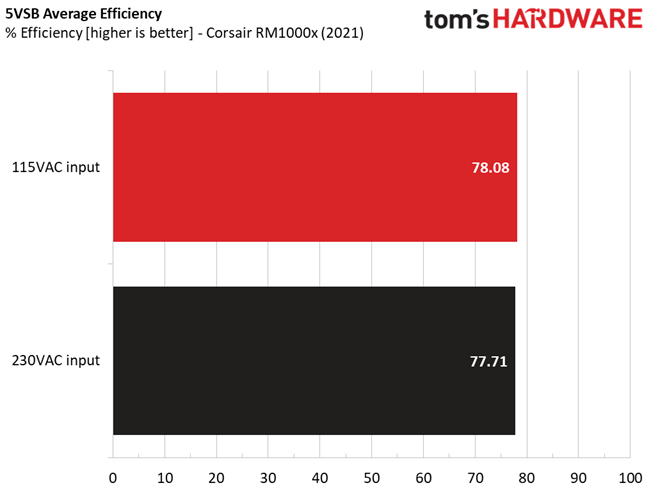
Results 19-20: 5VSB Efficiency

The 5VSB rail's overall efficiency is satisfactory, but it could be even higher.
Power Consumption In Idle And Standby
| Mode | 12V | 5V | 3.3V | 5VSB | Watts | PF/AC Volts |
| Idle | 12.035V | 5.058V | 3.305V | 5.057V | 2.086 | 0.149 |
| 115.1V | ||||||
| Standby | 0.035 | 0.003 | ||||
| 115.1V |
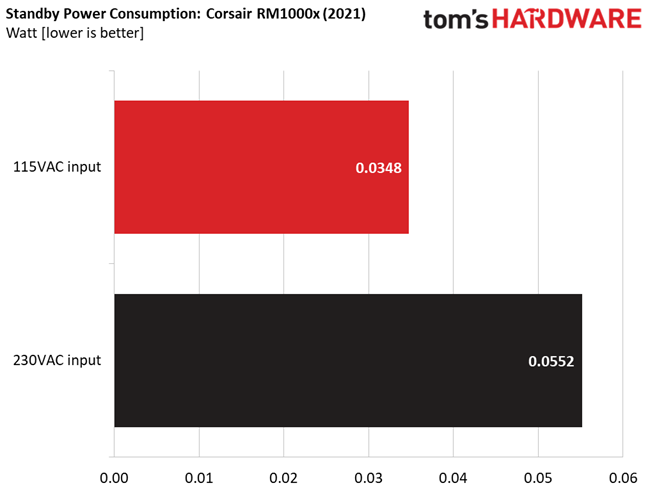
Results 21-22: Vampire Power

Vampire power is kept low with both voltage inputs.
Fan RPM, Delta Temperature, And Output Noise
All results are obtained between an ambient temperature of 37 to 47 degrees Celsius (98.6 to 116.6 degrees Fahrenheit).
The fan speed profile is not aggressive, even under high operating temperatures.
The following results were obtained at 30 to 32 degrees Celsius (86 to 89.6 degrees Fahrenheit) ambient temperature.
The load on the minor rails affects the fan speed profile, up to 550-600W of overall load. The fan's speed is kept at minimal levels if you keep the combined load at 5V and 3.3V below 100W. Lastly, the PSU outputs more than 30 dBA noise if you push it above 850W load.
MORE: Best Power Supplies
MORE: How We Test Power Supplies
MORE: All Power Supply Content
Current page: Load Regulation, Hold-Up Time, Inrush & Leakage Current, Efficiency and Noise
Prev Page Specifications and Part Analysis Next Page Protection Features, DC Power Sequencing, Cross-Load Tests and Infrared Images
Aris Mpitziopoulos is a contributing editor at Tom's Hardware, covering PSUs.
-
werther595 I see in this article that you compare specs with the Superflower Leadex V Pro 1000W. Will there be a review of that unit coming out? Or is there one that I have missed?Reply

